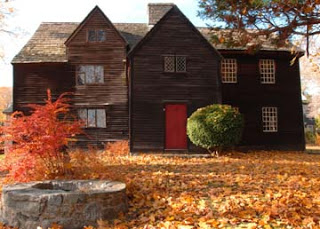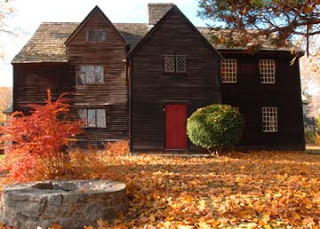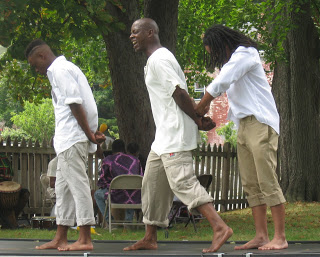In April, 2007, a small but influential group of historic house professionals, association and foundation staff gathered at Kykuit, the historic Rockefeller Estate in Pocantico Hills, NY, for the Forum on Historic Site Stewardship in the 21st Century. There they wrestled with the issue of how to reconcile the sheer number of historic houses in the US—by some estimates, over 18,000—with the resources available to support these nonprofits. The resulting recommendations included the call for the historic house field to demonstrate a “willingness to change its structure, programs, and services in response to the changing needs of that community.” Six years later, we are still only beginning to see the first hints of change. What will, finally force historic houses to adapt? Sheer economic necessity, perhaps, as funding continues to constrict and core visitors age. Some icons will endure because national fame, status (and endowments) make them secure—Monticello, Mt. Vernon, Winterthur. Which of the other, smaller less famous historic houses survive, and how? Today’s guest post, by Sheryl Hack, executive director of Connecticut Landmarks and Susie Wilkening, senior consultant at Reach Advisors, invites you to follow one attempt to implement the Kykuit recommendations, and reinvent the historic house.
Domestic spaces surround us, and in our daily lives are vibrant, living things. Our homes are messy, conflicted places of respite and love.
Yet historic house museums (as well as period rooms in art and history museums) have struggled to be dynamic and relevant in a changing society.
Why is this? How have we allowed these spaces that tell us so much about people and the human condition, for all of its beauty and foibles, to be perceived by many as dry, dusty, and dull?
We don’t mean to pick on historic house museums. To the contrary, we love them. And we believe strongly that historic house museums can be places of incredible relevance to visitors.
At Connecticut Landmarks (CTL), we have a great interest in rethinking how historic house museums can share remarkable stories that are relevant to not only visitors, but to the communities around them; we own twelve significant historic properties in Connecticut. But the status quo of guided tours, school programs, and the occasional public program is just too risky a path if we want to be a sustainable, and vital, organization in the future. Our previous work with Reach Advisors gave us considerable insight into how polarizing, and even repelling, guided tours are for many visitors (and non-visitors). But if not guided tours, what? And is it simply the medium (that guided tour), or are there other, more fundamental reason that historic house museums have struggled?

We suspect so. And thus we have commenced a big leap into the unknown. Thanks to IMLS Museums for America funding, we have the opportunity to turn one of our properties, Hempsted Houses in New London, into an experimental lab to try new interpretive strategies.
The Hempsted property is perfect for this endeavor as it is has powerful stories to share about race, slavery, social justice, and dramatic societal change. It has human stories that are heart-wrenching and heart-warming. It also has a multi-cultural neighborhood surrounding it that, despite the important role the property’s owners played in the neighborhood’s creation, more recently has found little reason to engage with the property.
To reinvent the historic house museum experience, we decided to engage what is probably the toughest historic house museum audience out there: teenagers. Partnering with The Writers Block, Ink, a local organization that seeks to give young adults the power to use pen and prose to ignite social change, next summer we will ask a group of teens to reinterpret the property in a way that they think will be compelling to their family and friends. We are going to provide art handling training, require historic accuracy, and we won’t let them take down any walls, but generally we want to give them the freedom to share the stories of the individuals who lived, worked, fought, loved, rested, and even slaved at this property as they see fit.
We have no idea what they will come up with, though we suspect it will not be the traditional guided tour. But we are hopeful that their ideas will spark new methods and ideas about how to present historic house museums , and we also hope that the process will help us better understand the why of the stories we choose to present. If these teenagers can succeed in making this property appealing to their friends, we are betting that their ideas will be appealing to other, broader audiences. (Not that we are forgetting our traditional visitor, or those visitors who happen to love guided tours. Other phases of audience research will incorporate their thoughts and ideas.)
The teen research is one phase of a larger re-interpretation project at Hempsted Houses that we hope will give us a resilient and engaging strategy for re-interpretation at our other properties. As this project kicks off, we are delighted to share our process, its twists and turns, its successes and failures, with the field along the way with the project blog, FindingCommunity: Engaging diverse audiences ina historic house. On the blog you will hear from the entire interpretive planning team, including CTL staff and our consultants: Louisa Brouwer (curatorial consultant); Robert Kiihne (RK Exhibits – exhibition planning); and Susie Wilkening (Reach Advisors – for audience and strategy work). Come summer, you’ll also likely hear from our consulting teenagers as well. We hope you will join us.
Elizabeth Merritt













I share your hope that what the teens come up with won't be "the traditional guided tour." But if the whole idea here is to reinvent and rethink historic houses, why restrict the innovative thinking to means? Why not really consider the ends — the purpose and role of historic houses? Why is it still about "telling the stories" of the house, which is what historic site museums have always tried to do? Why is still about "presenting" and "interpreting" — the most traditional goals in museum work? Isn't it possible to think about repurposing a given historic house as an active, contemporary, and perhaps participatory experience? Could it become (as one historic house director imagined with me a few years ago) an innovation center, an incubator or lab for the future? Or a teen hangout-plus-media-lab for experimenting with expression and collaboration? Or a space dedicated to local, socially diverse dialogue around difficult issues? If we want to think outside the box, we need to see the box.
Peter Linett's comment reminds me that historic house museums tend to confine the limits of options to activities at other museums (so will look at what an art museum or science center is doing). I suggest looking at other historic sites, especially the broader efforts in historic preservation, to discover successful approaches. For example, Montgomery County (Maryland) has been using Strathmore, a historic country estate, for exhibits, concerts, classes, and retail sales focused around art since 1983 through a public-private partnership. The building is well maintained and activities are popular, yet it's not a museum so it's off the radar. Is the "museum" label hindering or helping efforts to re-imagine historic sites?
Thanks to both Peter and Max for commenting.
Peter – your comments reinforce exactly what we want the teens to do because they don't have a box at all when it comes to historic houses. Thus, by default, whatever they want to do will be out-of-the-box. We'll simply be their helpers in this process(though I suspect it will be anything but simple). Our only requirement is that their work be rooted in the stories of this property; otherwise, what's the point of the property at all? What they do with those stories, or how those stories inspire them, is up to the teens.
Max – I like how your comment reinforces Peter's, in thinking out-of-the-box. The interpretive team will have to think about how we first present the house to the teens very carefully . . . and if we use the word "museum" at all.
Thanks again to both of you!
We have a lot to share on chasing relevance and audience for historic houses. Peralta Hacienda Historical Park in East Oakland is a state landmark with the Nat Reg 1870 Peralta House–a modest farm house once owned by the Peraltas, granted the land where seven modern cities now stand by the King of Spain. The site stands in a intensely diverse, low-income community, Fruitvale, in Oakland CA.
We have worked both inside and outside the tour paradigm. Community members have transformed the tours into times when neighbors come together.
Latinos comprise 51% of the local population. Docent trainings, given in both English and Spanish, are restricted to local residents who learn not only to tell the story of the house, but their own stories.
Community voices are interlarded in the permanent exhibits about the historical family. For instance, contemporary Native American voices from the neighborhood comment–in the museum's audio–on the history of the Spanish-speaking landowners.
One room is reserved for changing exhibits on community cultures. We have created exhibits about Laotian Mein community gardeners at the site, Cambodian traditional musicians, and others, working with the community members theselves. We are about to open an exhibit about Oakland's African American identities and memories as part of an art installation–a giant horse glowing from within from which voices emanate.
Our other innovation is an active oral history program. The house opened in 2001, restored to its historical conditions, with the Faces of Fruitvale exhibit, covering the walls with stories of the community today. The vision: "Every Human Being Makes History." In recent years we have teamed up with StoryCorps, furnishing them with dozens of interviews. The act of storytelling, listening, framing one's life in an intentional act, creates strong bonds between community and staff and generates an Archive of Community Memory.
Every hour the museum is open a Spanish and an English-speaking Community Tour Leader (CTL) are present. Our goal: that every man, woman and child in Fruitvale district be aware of this resource . We are focusing close to home, as the basis for continuing to spread the word out into the wider metropolitan area.
In our youth filmmaking program, youth have told their stories about life in Bhutanese refugee camps, the lengths to which teenagers are driven in the search for popularity, and many more stories relevant to teens. Most recently teens (from Chinese, Vietnamese, Salvadoreño and Mexican cultures) filmed their parents making their favorite foods. They discover that their connection to history, that they are entitled to be a part of the national narrative. In Global Chef, middle schoolers learn nutrition, cooking and geography, and share family recipes. Through these programs, we have become a crucial community anchor.
We ALSO have a very successful school field trips program serving the region, financially self-sustaining. The other programs need substantial government and private support. We struggle because of funders' allergy to granting operational funding.
I would love to be a part of this dialogue and learn from other houses. I am eager to see what the teens come up with. Please keep me in the loop.
Sincerely,
Holly Alonso, ED, Friends of Peralta Hacienda Historical Park. http://www.peraltahacienda.org
My hope is that the staff and leadership of Hempsted are engaged on a participatory level in the 'experiment.' This is an interesting foray into rethinking relevance and how to achieve it in situ.
Peter is standing at the outermost post, having traveled a great distance and now seeing the zenith. Giant Steps are indeed still taken one step at a time.
The Peralta example seems to be quite contemporary in its approach, collecting stories as objects, curating voices that tell their own stories in concert with communities. The 21st century has been so well-hyped for two decades as the information age, knowledge society, flat world, global community so much that we can believe it without checking to see if we're actully living it. Are our hisoric houses any differently connected with communities and patrons today than their predecessors were 100 years ago? Is economic sustainability the sole or primary driver of achieving relevance? I agree that the stories are the point here. Authority and authenticity are joint ventures in the work of museums. And this is why I am curious about the Hempsted case. To what extent will the narratives developed be censored or vetted to create an acceptable 'truth' insofar as history organizations can do so. Will their still be marginalziation of the voices once their stories have been constructed? How can these specific narratives be leveraged to connect with global/diasporic historical themes? The questions raised by this new interpretive lens on site in New London may end up being the most provocative and envigorating piece. The CTL/Reach Advisors/Curatorial Consultant project is exciting and promising and I hope to be able to follow it online from Saudi Arabia.
Thank you CFM, IMLS, and the PIs.
Mark
I think its very exciting and exactly the right direction to bring in the teens, creating the next generation of "owners" of our historic treasures. With their voices and views they have the capacity to evolve our sites to find new forms of relevancy for the future and, at the same time help to build our new audiences.
Lynn
Great idea but I think that you may run into some of the same issues I ran into when working with teens who developed an audio tour of an art museum for young children. We worked with a creative writing class who also learned about writing for audio. We really stressed that we wanted innovative ideas. Despite this I was surprised to see several students giving us a very traditional curatorial script. Modeling happens very early on and it led me to think that high school students may already be ingrained with too many traditional models. We did have enough students who came with up several innovative and humourous scripts and sound effects which was great but I still recall the 4 or 5 scripts that were carbon copies of typical museum labels.
Its great to try new things and God knows it is hard to recruit and train interpreters who are competent to inspire visitors of all ages. But suggesting that tours and traditions are no longer relevant – misses, I believe, the fact that a good story well told is almost timeless in its capacity to inspire.
This guide at President Monroe's house – a phenomenal experience. Yes, he had a good story to tell and YES – the house is cool and the stuff in it helps dramatize the story. But the secret sauce is this guides ability to engage an audience
http://www.youtube.com/watch?v=oXWWlqt6Rp4